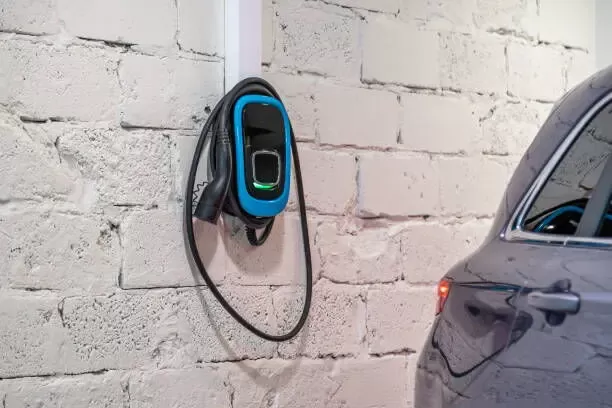Notifications

8 minutes, 41 seconds
-27 Views 0 Comments 0 Likes 0 Reviews

Topper Company, a leading professional EV charger manufacturer in China, delivers reliable electric vehicle charging stations and comprehensive charging solutions.
As electric vehicles (EVs) continue to grow in popularity around the world, so does the need for dependable, safe charging infrastructure. One issue that remains a significant concern for EV owners—especially those charging at home—is the risk of overheating during the charging process. Excess heat in an EV charger can compromise performance, shorten equipment lifespan, and pose serious safety hazards to your property.
Understanding what causes overheating and how to prevent it is key to ensuring long-term safety and efficiency. In this guide, we’ll explore the common causes of EV charger overheating, the potential risks involved, and smart solutions you can implement to protect your charging setup—particularly in residential environments.
There are several factors that can lead to charger overheating. Identifying and addressing these risks early can help ensure both safety and optimal charging performance.
Electrical connections degrade over time due to wear, corrosion, or improper installation. These weak points create electrical resistance, which generates heat during operation. If left unchecked, they can turn into dangerous hot spots.
Prevention Tip: Inspect terminals, plug ends, and wire connections regularly. Tighten loose fittings and replace any corroded components promptly.
Overloading an electrical circuit—by connecting your charger to an undersized or shared line—can quickly cause excessive heat buildup.
Prevention Tip: Always install your EV charger on a dedicated circuit rated for its power demand. Consult a licensed electrician to ensure your home's electrical system is properly configured.
Chargers exposed to direct sunlight or installed in hot, poorly ventilated areas are at greater risk of overheating.
Prevention Tip: Choose shaded, ventilated installation locations. Use weatherproof enclosures that allow airflow and protect the unit from direct heat and rain.
Most modern EV chargers have built-in fans, heat sinks, or passive cooling systems. If these become blocked by dust or debris—or fail altogether—temperatures can quickly climb.
Prevention Tip: Clean vents, filters, and fan areas regularly, especially for outdoor units. Check cooling mechanisms during routine maintenance.
Cheap or uncertified chargers may lack robust internal components, making them more prone to failure and overheating.
Prevention Tip: Invest in a high-quality, certified charger from a trusted manufacturer that meets safety standards such as CE, TUV, FCC, and CCC.
In smart chargers, software controls manage energy flow and safety functions. Bugs or outdated firmware can cause failures, such as continued charging even after the battery is full.
Prevention Tip: Choose chargers that support over-the-air (OTA) firmware updates. Regularly check for and install updates to ensure safety features function correctly.
Poor wiring, inadequate grounding, and non-compliant electrical setups increase the risk of overheating and electrical fires.
Prevention Tip: Always use certified professionals for installation and follow the manufacturer’s specifications carefully.
Like any electrical device, chargers require ongoing care. Dust buildup, cracked insulation, and worn cabling can all contribute to excessive heat and safety issues.
Prevention Tip: Schedule periodic inspections to check for damage, wear, or contamination. Test safety systems like the Ground Fault Circuit Interrupter (GFCI) regularly.
One of the most serious risks associated with overheating is fire. When components become too hot, nearby materials—especially in garages or wooden structures—can ignite. In commercial or public setups, advanced suppression systems like Stat-X aerosol fire extinguishers are becoming popular as early-intervention safety tools.
Repeated overheating cycles wear down internal components, reduce efficiency, and can lead to premature charger failure.
Excessive heat may also affect your EV's onboard charger and battery system. Long-term exposure to high temperatures can reduce battery life and, in severe cases, lead to dangerous battery failures.
Ensure your EV charger is powered by its own dedicated electrical line, free from interference by other heavy-load appliances.
Avoid cramped, closed, or sun-exposed areas. Provide adequate airflow around the charger to facilitate heat dissipation.
Select chargers that comply with international safety standards and include advanced thermal protection systems.
Example:
Topper EV Chargers are built to meet CE, TUV, FCC, and CCC certifications. They offer IP65-rated protection against water, dust, and environmental stress—ideal for both indoor and outdoor use.
Smart chargers now offer integrated temperature sensors and automatic shutdown features.
Topper Chargers, for instance, utilize an intelligent temperature control system that monitors heat levels throughout the charging process—from plug to connector. If overheating is detected, the system shuts down power delivery in under 0.2 seconds.
Schedule regular cleaning and visual inspections. Remove debris, check for discoloration, inspect cables, and test safety components like GFCIs.
Chargers with OCPP 1.6 or 2.0.1 compliance allow for smart energy management, including load balancing and remote monitoring. These features help avoid charging during peak grid times and reduce thermal stress.
Topper chargers support remote monitoring, OTA firmware updates, and dynamic charging profiles—ensuring safer, smarter energy usage.
EV chargers are a cornerstone of electric mobility, but they must be installed, operated, and maintained correctly to prevent overheating and ensure long-term safety. From loose wiring and cooling failures to software glitches and poor component quality, multiple factors can contribute to rising temperatures—but all are manageable with the right approach.
By using certified, intelligent chargers like those from Topper, maintaining proper installation practices, and staying on top of routine inspections, EV owners can dramatically reduce risk while enhancing the efficiency and durability of their home charging stations.
Safety starts with knowledge—and continues with action. Protect your EV investment, your property, and your peace of mind by staying proactive about charger safety and overheating prevention.Know more about Google SEO Directory
China EV Chargers EV Charger Manufacturer EV Charging Solutions

